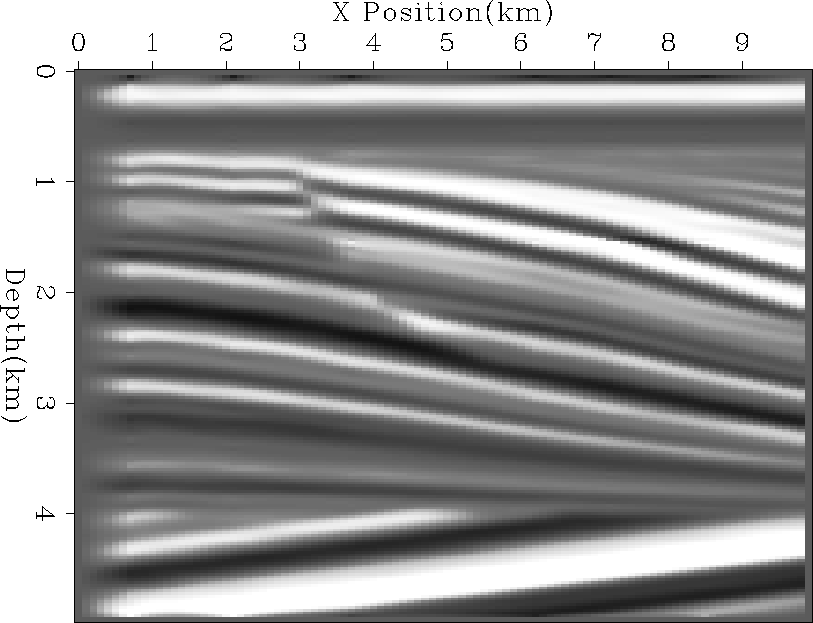|
fault.cont
Figure 10 The result of finding non-stationary PEF using the correct model and then applying it to the missing data problem. The returned image is almost exact and does a better job with bed discontinuities than Figure 8. |  |
To see the power of a non-stationary filter to characterize model covariance let 's return to the fault model missing data problem (Figure 8). For our interpolation we will use the known model as the basis for our PEF, and have a micro-patch size of one sample in x and z. The resulting interpolation, Figure 10 isn't quite as high-frequency as our initial model and we have a minimal amount of continuation of the layers over the fault, but we generally do an excellent job recovering the model.
|
fault.cont
Figure 10 The result of finding non-stationary PEF using the correct model and then applying it to the missing data problem. The returned image is almost exact and does a better job with bed discontinuities than Figure 8. |  |